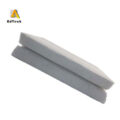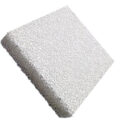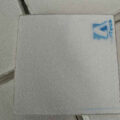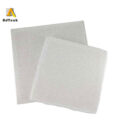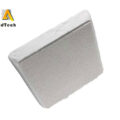The substantial increase in the ceramic foam filter filtration cost of large castings is an important issue that the foundry must consider. The increase in ceramic foam filter filtration cost of large castings is mainly caused by the following factors:
1) Increase in the thickness of the ceramic foam filter: The thickness of the current commonly used ceramic foam filter is 22mm. This is a reasonable value obtained by countless experiments and production practices after considering the balance between filtration effect and filtration cost. Due to the increase in the size of the filter used for large castings, the required thickness has also increased correspondingly, resulting in a substantial increase in the cost of the filter. The cost of a 50mm thick filter of the same size is about 60% higher than that of a 32mm thick filter and about 135% higher than a 22mm thick filter. Therefore, choosing a filter with a smaller thickness under the premise of ensuring that the filter does not break is of great significance to reducing the cost of filtration.
2) Increased placement position: As the size of the filter increases, the placement of the filter increases accordingly. However, the location of the filter in the CFF filter box is limited. In most cases, it is necessary to increase the size of the CFF filter box to increase the placement position of the filter, which causes a substantial increase in modeling costs. Therefore, it is very important to reduce the filter cost by choosing a flexible placement of the filter, and a small placement location is required.
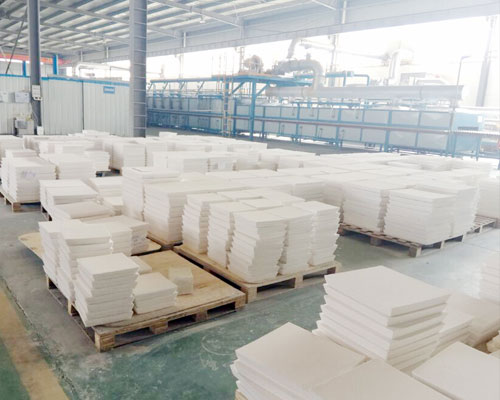
The pressure head of large castings is usually very high during pouring. This puts additional requirements on the strength of the molten metal filter, because the filter must be able to withstand the pressure exerted by the liquid metal. More importantly, as the size of a single filter increases, the support spacing of the filter increases accordingly, and the requirements for the strength of the filter also increase rapidly. When the filter is not strong enough to withstand the pressure of the liquid metal, it will break. Therefore, filters used for large-scale castings have correspondingly increased the thickness of the filter to improve the strength of the filter. Such as the thickness increased from 22mm to 32mm, or even 50mm. Nevertheless, limited by the strength of the filter, the maximum size that a single filter can currently achieve is only about 500mm.
In order to ensure the filtering effect, the ceramic foam filter is usually placed on the runner. Only one filter can be placed on each runner. Therefore, the size of the filter for large castings must be large enough. When designing the casting process, the casting engineer must consider whether there is enough space in the sand box to place the filter. As the size of the filter increases, the space required to place the filter increases accordingly. In many cases, there is not enough place in the sand box to install the enlarged size filter. Sometimes the foundry engineer has to place the filter on the sprue. At this time, although multiple filters of smaller size can be used, there is still a problem of insufficient space in most cases. As a result, the size of the sand box has to be increased for the placement of the filter, resulting in an increase in modeling costs.


